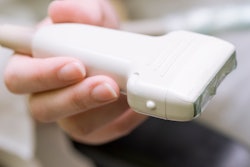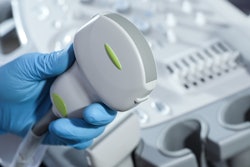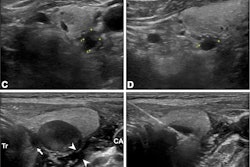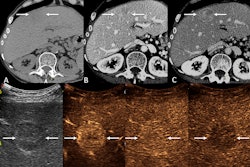Dear AuntMinnie Member,
Contrast-enhanced ultrasound (CEUS) continues to be explored as a noninvasive, less costly modality compared with other imaging methods or examination techniques.
For example, researchers from Thomas Jefferson University Hospital in Philadelphia evaluated CEUS’ clinical utility in categorizing indeterminate liver observations found on CT and MRI. They found that CEUS helped recategorize observations with high accuracy. Read what else they found in this edition’s featured story.
Also, a radiomics model based on CEUS imaging data could help accurately diagnose breast cancer. This comes from a study out of China describing the model’s high accuracy, which incorporated data from both around (peritumoral) and within (intratumoral) breast tumors on CEUS images.
In other news, ultrasound-guided ablation techniques are still creating buzz for interventional radiologists. Two recently published studies described how radiofrequency ablation can effectively treat malignant thyroid nodules and how thermal ablation can safely treat patients with secondary hyperparathyroidism, respectively.
Also, point-of-care ultrasound (POCUS) is back in the news. A study out of Yale University in Connecticut suggested that the tool can diagnose "retained products of conception" in women who experienced a pregnancy. Another study out of Yale found that novice users of lung ultrasound (LUS) can successfully acquire diagnostic-quality images with AI assistance.
The U.S. Office of the Surgeon General meanwhile recently issued a warning on alcohol-related cancer risk. Earlier this month, Surgeon General Vivek Murthy, MD, published an advisory recommending that the warning label for alcoholic beverages be updated to include a cancer risk warning. Ultrasound experts weighed in on how radiologists and sonographers alike may be impacted by this latest warning.
In international news, the office of New Zealand's Health and Disability Commissioner found that a radiologist and a sonographer failed to diagnose critical conditions during two pregnancies, including a twin baby who died three days after birth.
Josh Sokol, MD, a teleradiologist for vRad and a co-founder and director of First Read Initiative, wrote a column for AuntMinnie.com on how radiologists can increase global access to imaging. One example he described was how the initiative brought POCUS devices and training to multiple areas in Central and South America, rural Cambodia, and Ukraine.
Finally, imaging societies sounded off on a trimmed version of the continuing resolution that was passed by Congress in the 11th hour of its December 2024 deadline. The societies said the final CR is a mixed bag when it comes to healthcare funding, focusing on how the continuing resolution did not address the pay cut finalized by the U.S. Centers for Medicare and Medicaid Services.
Feel free to drop us a line if you have any new updates and innovations in ultrasound! In the meantime, be sure to check out our Ultrasound content area for the latest news and updates.
Amerigo Allegretto
Associate Editor
AuntMinnie.com



















